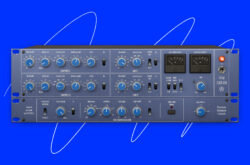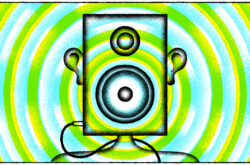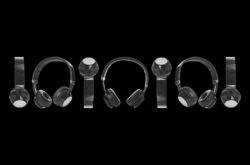Whether it’s for composition, sound design, or mixing, almost everyone has tips that they wish they knew earlier in their creative journeys.
In the video above, producer and audio engineer Max Rewak shares six key mixing tips that he wishes he knew earlier in his own career. See below for a summary of top takeaways, and watch above for more details and to hear how each tip applies in the DAW.
1. Know your listening environment
A lot of the most exciting new music we hear today is made entirely in bedrooms and home studios. While there’s absolutely nothing wrong with these environments, it’s important to acknowledge that they likely introduce unique idiosyncrasies when you’re listening to your mixes on speakers.
There are a few ways to mitigate the effects of these sorts of spaces. One is to apply some DIY acoustic treatment to your room. If that’s not an option, an alternative is to use tools like SoundID Reference to calibrate your speakers.
And whether or not you’re able to make changes to your space or calibrate your tools, listening to bounces in an array of different environments and mediums—your studio, on earbuds, in the car, in the club you DJ at, etc.—will also help you make sure that your mix is balanced and not too shaped by the acoustic characteristics of your primary workspace.
Go to 0:27 in the video to hear more on this tip and see how it applies in action.
2. Prioritize the bigger picture
Soloing your tracks can definitely be helpful in dialing in effects and parameters when you’re mixing. However, some may fall into the trap of trying to make every single stem sound perfect in isolation—and this is where things can quickly get out of hand.
When mixing, always prioritize how individual tracks sound in the greater context of your production, as opposed to how they sound when solo’ed. This can help you avoid over-processing or endlessly tweaking parameters that may or may not be making a positive impact on the track as a whole (which is the only thing your audience will be hearing anyways).
Go to 2:44 in the video to hear more on this tip and see how it applies in action.
3. Use high-pass EQs with purpose
A common mixing tip that you’ll find online is a recommendation to apply high-pass EQs across almost every track to carve out room for the bass. While a careful amount of this can definitely help remove unwanted rumbles and muddiness, it’s important to use high-pass EQs with purpose; sometimes you’ll actually end up removing valuable character from a sound if you’re mindlessly cutting the low end from anything and everything.
The key here is to just make sure you’re listening intently for the impact a mixing decision is making, rather than dialing in changes for the sake of checking off a box.
Go to 5:26 in the video to hear more on this tip and see how it applies in action.
4. Take more breaks while mixing
Whether you’re a beginner or a veteran, this is probably one thing that almost everyone can improve at: make sure to take frequent breaks when you’re mixing. While getting into a flow state is important, working on a session for hours on end will make you lose all sense of objectivity. Taking a break every hour or two will not only keep your mixing sensibilities sharp, but is also key for protecting your hearing, which is arguably the most valuable thing you can do for your career as a musician.
Go to 7:53 in the video to hear more on this tip and see how it applies in action.
5. Don’t underestimate stock audio plugins
Stock audio plugins tend to get a bad rep, but the reality is that many of them are severely underrated and contain all of the features you need to create a great product. Especially if you’re just starting out with mixing, don’t feel the need to go buy a ton of third-party plugins just because you saw someone using them in a YouTube tutorial—if anything, the simplified UI of many stock plugins can be great for learning, while still allowing you to achieve a highly professional sound.
If you’re looking for more on this topic, in this recent YouTube Shorts video, we covered a few of the many incredible built-in tools offered by different DAWs.
Go to 8:54 in the video to hear more on this tip and see how it applies in action.
6. Know when a mix is done
This tip is admittedly easier said than done—more often than not, it’s easier for us to keep tweaking forever than committing to an end product and exporting our track.
One way to know when your mix is finished is when you feel you can no longer take anything out of it. This means that every sound in your mix has a clear purpose, and sounds the way you want it to sound in the context of the whole. In order to arrive to this point, it’s important to use the mute button as much as you use the solo button—try removing elements, and see if it helps bring definition or create space for the most important components of your mix.
Go to 11:40 in the video to hear more on this tip and see how it applies in action.
What are your go-to mixing tips?
Hopefully these mixing tips have either exposed you to new ideas, or reminded you of some fundamentals that you should keep in mind when working on a track. That said, do you have any key mixing tips of your own that we missed? What sorts of topics would you like to see us cover on the Splice YouTube channel next? Let us know in the comments section of the video.
Continue your journey in mixing with iZotope’s industry-leading suite:
August 21, 2022


